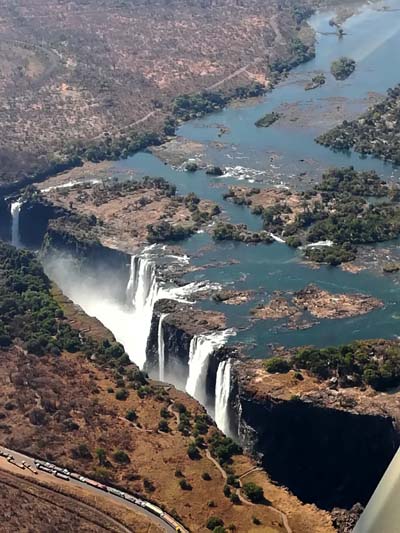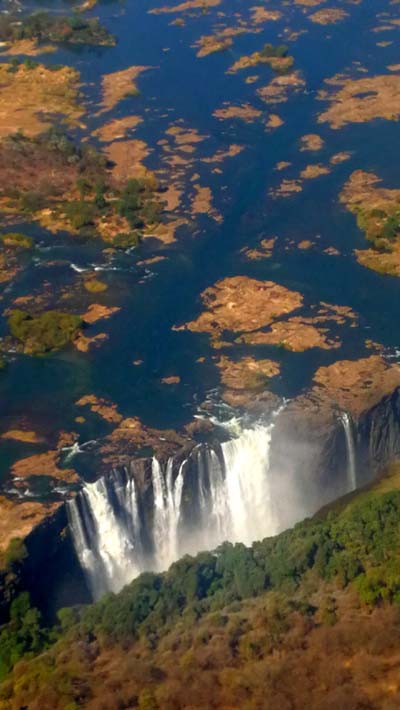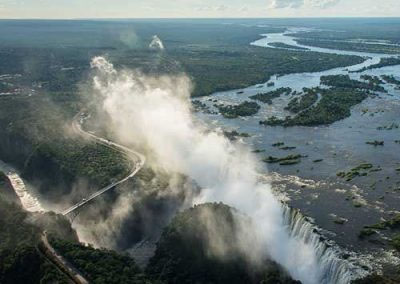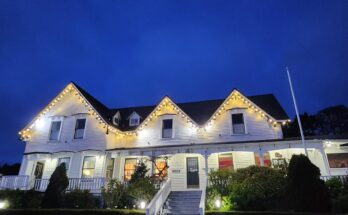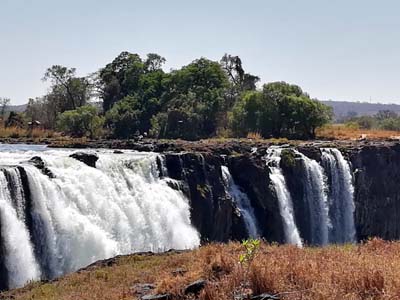
Ranked as one of the Seven Wonders of the Natural World, Victoria Falls is located on the Zambezi River on the border between Zimbabwe and Zambia. When explorer David Livingstone became the first European to set eyes upon the falls in 1855, he commented that “scenes so lovely must have been gazed upon by angels in their flight”. Certainly, the planet’s largest sheet of falling water is an impressive sight. Today, it remains one of the most popular destinations in Southern Africa, with visitors traveling from far and wide to admire the falls from viewpoints on both sides of the river.
Victoria Falls Facts & Statistics
At 5,604 feet/1,708 meters in width and 354 feet/108 meters in height, Victoria Falls is neither the world’s widest or tallest waterfall. However, the combination of both measurements makes it the world’s largest waterfall, with over 500 million liters of water plunging over the edge per minute during peak flood season. This astonishing volume generates a curtain of spray that can be seen from up to 30 miles/48 kilometers away, giving the falls its indigenous name, Mosi-oa-Tunya or ‘The Smoke That Thunders’.
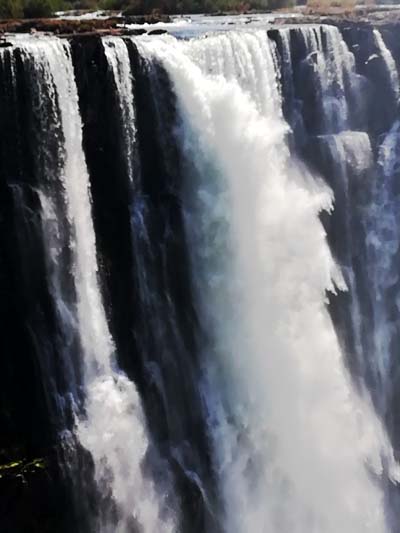
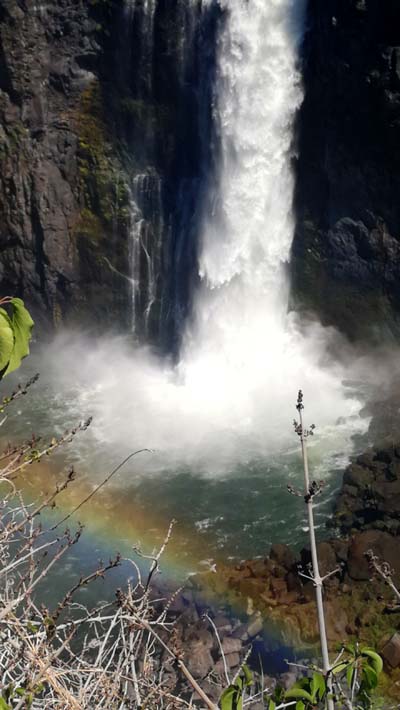
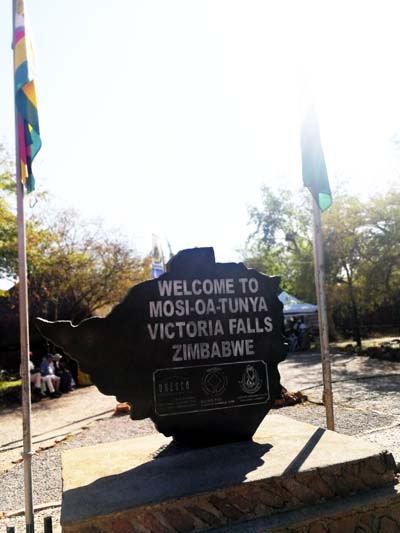
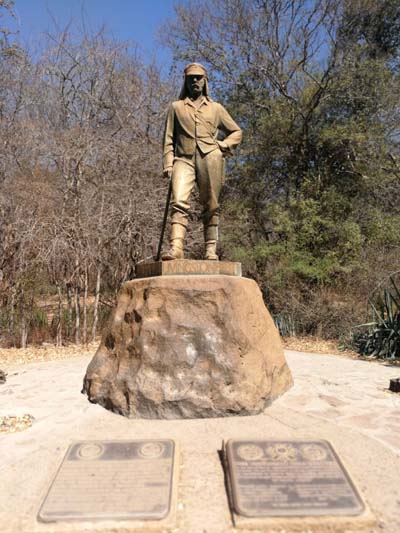
Victoria Falls is part of two national parks: Mosi-oa-Tunya National Park on the Zambian side and Victoria Falls National Park in Zimbabwe. The falls’ unique geography means that you can view them face-on and experience the full force of their thundering noise and power. The rainy season in Southern Africa lasts from late November to early April. If you want to see the falls at their most impressive, travel between February and early May when they are in peak flood. That being said, Victoria Falls is a rewarding destination all year round.
To view the Falls there are two options:
Zimbabwe
Two-thirds of the falls are located in Zimbabwe. Head to Victoria Falls National Park to explore a series of well-marked pathways that wind their way through the rainforest to provide access to 16 different viewpoints. From here, enjoy classic, face-on views of the Main Falls, which are impressive even in the height of the dry season. The Zimbabwean side is renowned for its excellent game-viewing opportunities, while Victoria Falls town is closer to the falls than the Zambian gateway, Livingstone.
Zambia
Zambia offers fewer viewpoints, and if you travel during the driest months (October and November), the Zambian section of the falls may have dried up completely. However, many visitors prefer the slightly wilder, ‘road-less-traveled’ feel of Mosi-oa-Tunya National Park. The park is also half the price
of its Zimbabwean counterpart at $15 per person. Most activities are available on both sides of the falls. The exception is Devil’s Pool, a natural swimming pool on the edge of the falls that can only be accessed from Zambia’s Livingstone Island. For adrenalin junkies, this is an experience not to be missed.
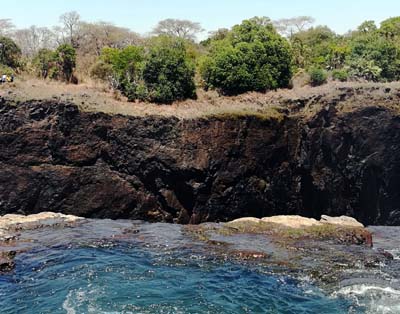
View from Devil’s Pool
Devil’s Pool is a natural rock pool located next to Livingstone Island on the lip of Victoria Falls. During the dry season, the pool is shallow enough to allow visitors to swim safely to the edge, where they are protected from the 330 foot/ 100 meter drop by a wall of submerged rock.Under the supervision of a local guide, it is even possible to stare over the edge of the abyss into the boiling boiling pot of froth and spray below. This is the closest that you can get to the Falls, and an unforgettable way to experience the sheer power of one of the world’s Seven Natural Wonders.
Devil’s Pool can only be accessed from the Zambian side of the Zambezi River. The easiest way to get there is to join one of the Livingstone Island tours arranged by local operator Tongabezi Lodge. After a short boat ride to the island, your tour guide will help you to navigate over a series of rocks and shallow sections of rapidly moving water to the edge of the pool. Once there, entering the pool requires a leap of faith from an overhanging rock. You’ll need to trust that you won’t be swept over the edge; but once you’re in, the water is warm and the view is incomparable.
Swimming at Devil’s Pool is only possible during the dry season, when the river level falls and the flow of water is not as strong. The pool is therefore generally only open from mid-August to mid-January, during which time Tongabezi Lodge runs five tours per day. It is possible to book in advance via their website, or through recommended operators in Zambia and Zimbabwe including Safari Par Excellence and Wild Horizons. The lodge’s twin-engine boat has space for up to 16 visitors. Excursions include a tour of Livingstone Island and an insight into its history from ancient sacrificial site to present-day World Heritage Site.
There are three tours to choose from: the Breezer tour, which lasts 1.5 hours and includes breakfast; the Lunch tour, which lasts 2.5 hours and includes a three-course meal; and the High Tea tour, which lasts two hours and includes a selection of rolls, cakes and scones. The tours are priced at $110, $175 and $150 per person respectively.
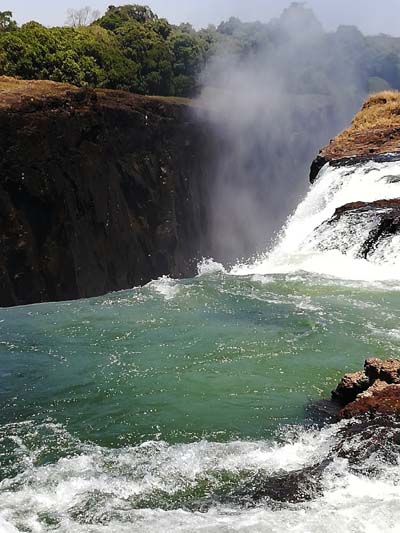

View the Falls From the Air
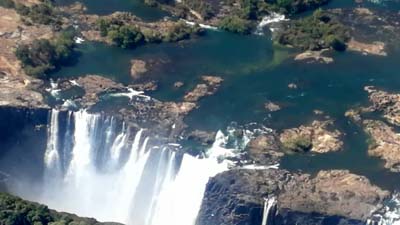
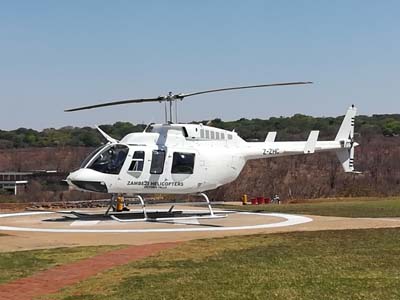
Sightseeing flights may be pricey, but they also offer an unforgettable way to appreciate the falls’ sheer size and spectacular scenery. Companies like Wild Horizons offer helicopter tours, with different lengths and routes to choose from and specially curved windows that allow for the best views and photographs. If you’re feeling particularly brave, you can always sign up for a microlight flight instead. Batoka Sky offers a combination Victoria Falls and game viewing flight that gives you the chance to spot the wildlife of Mosi-oa-Tunya National Park from the air.
